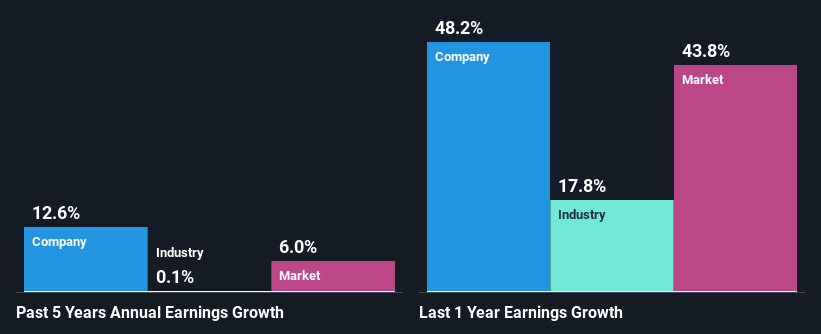Halma plc's (LON:HLMA) Stock Has Been Sliding But Fundamentals Look Strong: Is The Market Wrong?
With its stock down 4.1% over the past week, it is easy to disregard Halma (LON:HLMA). However, stock prices are usually driven by a company’s financial performance over the long term, which in this case looks quite promising. Specifically, we decided to study Halma's ROE in this article.
ROE or return on equity is a useful tool to assess how effectively a company can generate returns on the investment it received from its shareholders. Put another way, it reveals the company's success at turning shareholder investments into profits.
View our latest analysis for Halma
How To Calculate Return On Equity?
ROE can be calculated by using the formula:
Return on Equity = Net Profit (from continuing operations) ÷ Shareholders' Equity
So, based on the above formula, the ROE for Halma is:
20% = UK£262m ÷ UK£1.3b (Based on the trailing twelve months to September 2021).
The 'return' refers to a company's earnings over the last year. That means that for every £1 worth of shareholders' equity, the company generated £0.20 in profit.
Why Is ROE Important For Earnings Growth?
Thus far, we have learned that ROE measures how efficiently a company is generating its profits. Based on how much of its profits the company chooses to reinvest or "retain", we are then able to evaluate a company's future ability to generate profits. Assuming everything else remains unchanged, the higher the ROE and profit retention, the higher the growth rate of a company compared to companies that don't necessarily bear these characteristics.
Halma's Earnings Growth And 20% ROE
At first glance, Halma seems to have a decent ROE. Further, the company's ROE compares quite favorably to the industry average of 14%. This probably laid the ground for Halma's moderate 13% net income growth seen over the past five years.
As a next step, we compared Halma's net income growth with the industry, and pleasingly, we found that the growth seen by the company is higher than the average industry growth of 0.1%.
Earnings growth is an important metric to consider when valuing a stock. What investors need to determine next is if the expected earnings growth, or the lack of it, is already built into the share price. Doing so will help them establish if the stock's future looks promising or ominous. If you're wondering about Halma's's valuation, check out this gauge of its price-to-earnings ratio, as compared to its industry.
Is Halma Using Its Retained Earnings Effectively?
With a three-year median payout ratio of 34% (implying that the company retains 66% of its profits), it seems that Halma is reinvesting efficiently in a way that it sees respectable amount growth in its earnings and pays a dividend that's well covered.
Moreover, Halma is determined to keep sharing its profits with shareholders which we infer from its long history of paying a dividend for at least ten years. Upon studying the latest analysts' consensus data, we found that the company is expected to keep paying out approximately 30% of its profits over the next three years. Accordingly, forecasts suggest that Halma's future ROE will be 18% which is again, similar to the current ROE.
Summary
On the whole, we feel that Halma's performance has been quite good. In particular, it's great to see that the company is investing heavily into its business and along with a high rate of return, that has resulted in a sizeable growth in its earnings. With that said, the latest industry analyst forecasts reveal that the company's earnings growth is expected to slow down. To know more about the latest analysts predictions for the company, check out this visualization of analyst forecasts for the company.
Have feedback on this article? Concerned about the content? Get in touch with us directly. Alternatively, email editorial-team (at) simplywallst.com.
This article by Simply Wall St is general in nature. We provide commentary based on historical data and analyst forecasts only using an unbiased methodology and our articles are not intended to be financial advice. It does not constitute a recommendation to buy or sell any stock, and does not take account of your objectives, or your financial situation. We aim to bring you long-term focused analysis driven by fundamental data. Note that our analysis may not factor in the latest price-sensitive company announcements or qualitative material. Simply Wall St has no position in any stocks mentioned.

